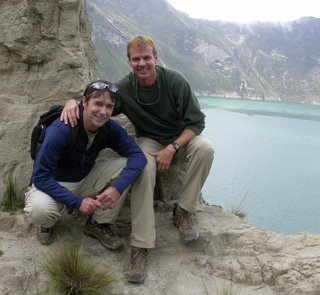Book notes
The Worst Hard Time by Timothy Egan
A lot of the prairie sod was busted for wheat production in anticipation of WW1. Prices remained high in the 1920's on account of poor Russian harvests. Then they collapsed in the 30's because of record American production + resurgence of Russian harvests.
Boise City, Oklahoma, was created as a real estate scam. Boise is French for trees. Just as Greenland had no green when it was named, Boise City had no trees.
Many ethnic Germans were recruited from the Russian steppes to farm the south prairie of America. These German farmers were first recruited to Russia by Catherine the Great (herself a German) with promises of waivers from taxes and military service, promises later reneged by Alexander II.
April 19, 1935 "The senators went to the window. Early afternoon in mid-April and it was getting dark. The sun over the Senate Office Building vanished. The air took on a copper hue as light filtered through the furry of dust. . .'This, gentlemen, is what I'm talking about,' said Bennett. 'There goes Oklahoma' Within a day, Bennett had his money and a permanent agency to restore and sustain the health of the soil."
In keeping with the big-government projects of the time, pushed by politicians with a flair for the dramatic and no expertise, Roosevelt overruled his advisers and started a plan to plant a 100-acre strip of forest from San Antonio to Canada.
George Will: On May 10, 1934, a collection of dust storms moved over the Midwest carrying, Egan says, "three tons of dust for every American alive." It dumped 6,000 tons on Chicago that night. By morning, the storm was 1,800 miles wide -- "a great rectangle of dust" weighing 350 million tons -- and was depositing the surface of the Great Plains on New York City, where commerce stopped in the semi-darkness.
A lot of the prairie sod was busted for wheat production in anticipation of WW1. Prices remained high in the 1920's on account of poor Russian harvests. Then they collapsed in the 30's because of record American production + resurgence of Russian harvests.
Boise City, Oklahoma, was created as a real estate scam. Boise is French for trees. Just as Greenland had no green when it was named, Boise City had no trees.
Many ethnic Germans were recruited from the Russian steppes to farm the south prairie of America. These German farmers were first recruited to Russia by Catherine the Great (herself a German) with promises of waivers from taxes and military service, promises later reneged by Alexander II.
April 19, 1935 "The senators went to the window. Early afternoon in mid-April and it was getting dark. The sun over the Senate Office Building vanished. The air took on a copper hue as light filtered through the furry of dust. . .'This, gentlemen, is what I'm talking about,' said Bennett. 'There goes Oklahoma' Within a day, Bennett had his money and a permanent agency to restore and sustain the health of the soil."
In keeping with the big-government projects of the time, pushed by politicians with a flair for the dramatic and no expertise, Roosevelt overruled his advisers and started a plan to plant a 100-acre strip of forest from San Antonio to Canada.
George Will: On May 10, 1934, a collection of dust storms moved over the Midwest carrying, Egan says, "three tons of dust for every American alive." It dumped 6,000 tons on Chicago that night. By morning, the storm was 1,800 miles wide -- "a great rectangle of dust" weighing 350 million tons -- and was depositing the surface of the Great Plains on New York City, where commerce stopped in the semi-darkness.


<< Home